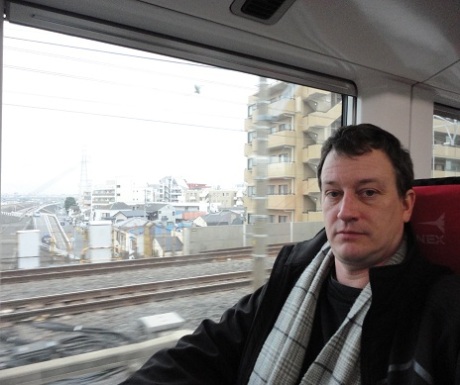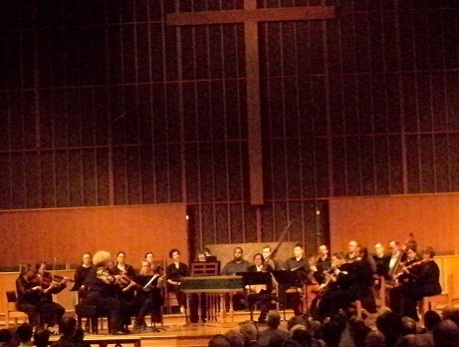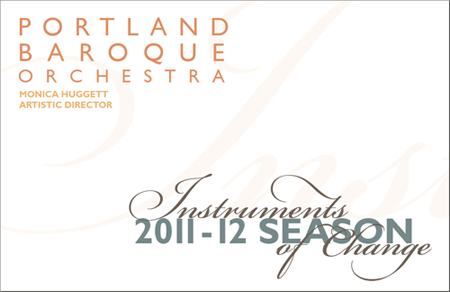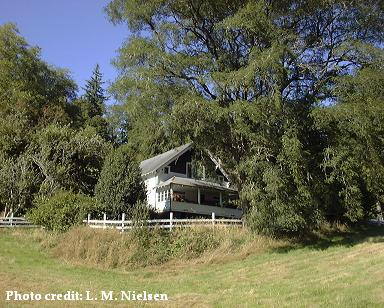Snowstorm Reflections on Collapse and Recovery
15 January 2017
Sunday

Early in the history of this blog I wrote about a snowstorm in Portland during December 2008, Snow in Portland, More Snow, and Lessons from a Snowstorm, and now Portland has had another uncharacteristically heavy snowfall eight years on. I am always fascinated to watch the rapidly changing behaviors of the population of a city as it responds to rapidly changing conditions, and I can’t help but extrapolate from these observations to other disruptions to the ordinary business of life.
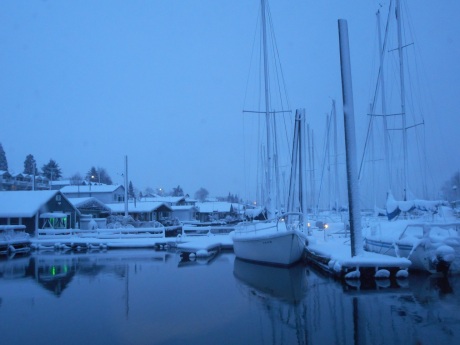
The initial impact of a big snowstorm (in a temperate climate where snowstorms are infrequent) is chaos and frantic activity. After the initial chaos, the city goes quiet, and driving around a city after it has gone quiet gives an apocalyptic feeling, as though the end of the world has come. A snowstorm is, in miniature, the collapse of a complex society, such as Joseph Tainter wrote about:
“Collapse, as viewed in the present work, is a political process. It may, and often does, have consequences in such areas as economics, art, and literature, but it is fundamentally a matter of the sociopolitical sphere. A society has collapsed when it displays a rapid, significant loss of an established level of sociopolitical complexity. The term ‘established level’ is important. To qualify as an instance of collapse a society must have been at, or developing toward, a level of complexity for more than one or two generations. The demise of the Carolingian Empire, thus, is not a case of collapse — merely an unsuccessful attempt at empire building. The collapse, in turn, must be rapid — taking no more than a few decades — and must entail a substantial loss of sociopolitical structure. Losses that are less severe, or take longer to occur, are to be considered cases of weakness and decline.”
Joseph A. Tainter, The Collapse of Complex Societies, Cambridge: Cambridge University Press, 1988, p. 4
Of course, the collapse precipitated by a snowstorm is not a political collapse, but it is a rapid and significant loss of an established level of complexity, and a temporary return to a simpler way of life.
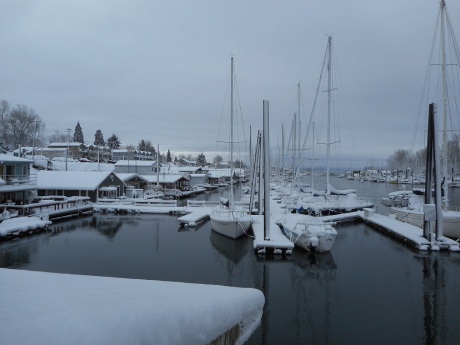
When someone abandons their car and walks away, eventually walking around their neighborhood rather than driving, this is a significant simplification of life, and the simplest level to which life can be reduced is that of mere survival, or perhaps I should say subsistence. Because the conditions of a snowstorm or a flood or some similar disruption (say, a power outage) are temporary it does not force a return to subsistence agriculture, but there are occasions when one finds oneself no longer concerned by the technical details of one’s work, and one is only fighting to stay alive, as all other considerations are thrust aside in order to deal with the immediacy of the circumstances. However, it is easy to imagine (especially with the looming specter of climate change) that a storm could be the first disruption in a series of escalating disruptions that could force society to abandon its complex institutions and way of life, returning to subsistence agriculture, or even nomadic hunting and gathering. If a large flood failed to recede after a few days because water levels had crept higher, the disruption of the the storm that caused the flood would be a mere foretaste of things to come.

There is a great deal of social momentum behind the ordinary business of life, and one can observe that people continue to go about their routines in the routine way for as along as possible — right up the moment when it becomes actually physically impossible to continue to going about things as usual. Thus one sees people setting out for work as usual even as the snow is beginning to fall, and as the snow piles up they try to continue to go about their business. It is only when, on the drive home, their car will not move forward another inch, when they abandon it and walk away. As long as a choice remains, most will choose to continue with the ordinary business of life; the routine is only abandoned when no choice remains and one is forced by circumstances to alter one’s behavior.

There is also a strong desire to return to normalcy after the disruption of a storm, so that at the first sign of conditions improving, people head out again in large numbers. In the case of the snowstorms I have seen in my years, this creates a problem because the main roads will be cleared of snow, but the secondary roads and parking lots are still icy, and many people over-confidently driving at full speed on the highways cause problems for themselves and others. The desire for the return to normalcy is a desire for the familiar normalcy, the old normal, while the conditions of the storm, strange and unfamiliar at first, dictate a new normal, and there is a tension between the old normal and the new normal as society attempt to adjust and compensate for changed conditions. As long as the conditions of the new normal are temporary, the old normal will return, but the longer the conditions persist, the longer the new normal persists, and, as the phrase implies, the new normal eventually becomes familiar if it endures for a sufficient period of time.

I imagine that in the case of the true collapse of societies, and not merely an ephemeral collapse precipitated by a weather event, that this desire to return to normalcy results in a lot of false starts, like commuters returning to the roads too soon after a snowstorm. There are probably many hopeful moments in the collapse of a society when people come out of their hiding places and venture out into the world again, hoping that they can return to their routines. When Sarajevo was under siege during the Balkan wars of the 90s, it was several years before life could return to normal. Similarly, when the First and Second World Wars began, it would be several years before normalcy would return.

When a society well and truly collapses, never to rise again, one can imagine for years or for decades people looked for a return to normalcy that would never come. Or if life seemed to return to normal for a time — for weeks or months or years — it was only a deceptive return to old ways that would soon disappear forever. When Roman cities in the west began to fail, there was probably a movement like the ebb and flow of the tide, when people would abandon their city, then go back, then abandon it again. Each time those who returned would be fewer in number, there would be fewer shops open, and fewer goods for sale, and there might be increasing lengths of time between abandonment and return, until eventually the period of abandonment stretched into years, and the city fell into disrepair, fit only for looting from the ruins.
. . . . .
. . . . .
. . . . .
. . . . .
Tokyo to Portland
12 February 2013
Tuesday
I departed Tokyo as I arrived, on the Narita express, at the Shinjuku station. Tokyo is an overwhelming place, and it would be easy to feel oneself quite at sea while attempting to negotiate this vast metropolis. But today it feels just slightly less overwhelming, because I became just a little familiarized with a very small portion of Tokyo, having learned how to use the local train stations at Shinjuku and Yoyogi and Iidabashi, and so on. So in at least one sense, I did not depart as I arrived, because I take back with me a little bit of knowledge about Tokyo. As a true believer in the Socratic imperative that knowledge is good, I then count my week long expedition a good thing, however many mistakes I might have made, and however short the time may have been.
I think that some people derive a perverse pleasure from talking about all the things that went wrong in the course of travel. I have had my share of mishaps, but I have never had a vacation that left me feeling dissatisfied that I had come — only dissatisfied that I had to leave. As difficult as it is to tear myself away from my routine, once torn away I quite definitely have the feeling that I could keep going on the road indefinitely, with no need to go home again.
I have never had a vacation I would not readily and gladly repeat — indeed, as I travel I often think of a first trip as reconnaissance for a future trip that will be all the more fulfilling because I have some basic knowledge that will make that next attempt that much better. It is highly likely that there are places I have seen that I will never visit again, but I always go home with the idea that I can’t wait to go again, and that I never really wanted to leave.
. . . . .
. . . . .
. . . . .
The Jasper Quartet in Portland
30 October 2011
Sunday
I had the privilege of attending the performance of the Jasper String Quartet at the Reed College Kaul Auditorium this evening. This concert was part of the Chamber Music Northwest 2011-2012 Encore Series, and included performance of the following:
● Barber String Quartet, Op. 11 (1938)
● Kernis String Quartet No. 1, “musica celestis” (1990)
● Schubert String Quartet No. 14 in D Minor, “Death and the Maiden”
It was a real treat to hear two twentieth century quartets performed live by a vital ensemble that really invested a feeling of liveliness into music that, if we paused to reflect on the popular reputation of art music of the twentieth century, ought to be academic and distant. This music, given a sensitive and comprehending performance, reveals itself as poignant and as direct as that of any genre or any age.
Barber’s quartet is best known for the second movement, which Barber himself also separately arranged as the Adagio for Strings for chamber orchestra. During a pause in the second movement, when the entire hall was as still as a tomb, I heard a woman behind me quietly say, “Amazing!” And it was amazing.
Listening to the Jasper Quartet perform the piece by Barber, and mindful of the reputation of twentieth century art music (as mentioned above), I was reminded of another aesthetic experience earlier in my life. When I was in Frankfurt in 1991 I visited an art museum focused on modern art. This museum no longer exists in the form that I saw it, since it has since been moved to a new building and has expanded its collection. What struck me about these modern paintings I saw in Frankfurt was really how unmodern they were — that is to say, how traditional they were, how steeped they were, how deeply immersed they were, in the tradition of European painting. If you see paintings like this in a book of art hsitory, you see what looks like a field of plain color, or some such abstract form. Up close, they were nothing like this at all. The seemingly plain fields of color were textured and infinitely varied in detail.
Barber’s quartet struck me in a similar way: while recognizably “modern,” it is deeply immersed in the traditions of Western music, and it projects a texture that speaks of the long history of which it is a particular expression. An aesthetic experience such as I had in Frankfurt put me on notice relatively early in my life of the importance of seeing works of art with one’s own eyes and not relying too heavily on reproductions, however good the quality of the reproduction. Similar concerns hold for music: it is important to see and to hear music performed if one is going to arrive at a proper appreciation of it.
The second work performed, Kernis String Quartet No. 1, “musica celestis,” dates from fifty years after the Barber quartet, and is the work of a living contemporary. Sam Quintal of the quartet gave a short talk about the piece before they commenced its performance, having the violins and the cello perform bits of the melody so that the audience could listen for these recognizable parts in what turned out to be a highly compressed and dense musical texture.
Mr. Quintal prepared the audience for the complexity and difficulty of this work, but to use these words doesn’t nearly come close to doing the work justice. If you speak of “difficult” art music someone might think of Shostakovitch, and if you speak of “complex” art music someone might think of, say, Elliott Carter or Brian Ferneyhough. Mentioning Shostakovitch reminds me of an anecdote. I once heard an interview with a performer in a string quartet, and this performer talked about the feeling of tension that built while performing works of Shostakovitch, and that after performing the Shostakovitch that they would follow it with Ravel’s quartet, which in this context had a feeling of release, relief, and catharsis.
Well, the Kernis string quartet had much more in common with the vital and breezy quality of Ravel than with the plethora of notes one might expect from, say, Elliott Carter. And while its complexity rivaled the “new complexity” of Brian Ferneyhough, it was never complexity for complexity’s sake: every note of the music was musically justified. One could even say that every note was lyrically justified, because the work was extraordinarily lyrical.
I had never even heard of Kernis prior to this performance, but this quartet was a fantastic piece, and certainly something that is likely to become a fixture of future quartet repertoire — and all to the good, I say. While it looked fiendishly difficult to play, it was a great joy to hear.
Prior to performing Schubert’s String Quartet No. 14 in D minor, “Death and the Maiden,” Sam Quintal of the quarter read the poem by Matthias Claudius (1740-1815) that was the inspiration for Schubert’s song of the same name, and then the famous quartet, which must be one of the most famous examples of the form. In any case, here is the poem, first in the original German:
Das Mädchen:
Vorüber! ach, vorüber!
Geh, wilder Knochenmann!
Ich bin noch jung, geh Lieber!
Und rühre mich nicht an.Der Tod:
Gib deine Hand, du schön und zart Gebild!
Bin Freund, und komme nicht zu strafen.
Sei gutes Muts! Ich bin nicht wild,
Sollst sanft in meinen Armen schlafen!
And in English translation:
The Maiden:
“It’s all over! alas, it’s all over now!
Go, savage man of bone!
I am still young – go, devoted one!
And do not molest me.”Death:
“Give me your hand, you fair and tender form!
I am a friend; I do not come to punish.
Be of good cheer! I am not savage.
You shall sleep gently in my arms.”
It was deeply satisfying to me to hear this performed live, as it is a piece of music that I know well, and the performers really leaned into it, giving the performance a striking physicality.
. . . . .
. . . . .
. . . . .
. . . . .
Headed Back to Portland
3 October 2011
Monday
I am headed back to Portland after having come to Florida for the 100 Year Starship Study public symposium in Orlando. I’ve chronicled my reactions to the symposium in three posts that I wrote on the evening of each day of the symposium while the events were still fresh in my mind: 100 Year Starship Study Symposium Day 1, 100 Year Starship Study Symposium Day 2, and 100 Year Starship Study Symposium Day 3.
I certainly learned some important lessons. If I ever get the chance to make another presentation, my first question will be, “How much time do I have?” My second question will be, “Do you have any limit on the number of slides that I can use with my presentation?” These are the parameters of public speaking. On a blog one can write as much or as little as one likes. The format is as flexible as one’s inspiration of the moment. When the personal time of others is involved, however, one’s degrees of freedom are constrained. That is a valuable lesson.
While I will not get a second chance to make a first impression, the ideas that I incorporated into my presentation will get a second chance, as one of the requirements for speaking at the 100YSS was to submit a paper, with the intention of the paper to be published in some future number of the Journal of the British Interplanetary Society.
While I was working on my paper and my presentation I conceived a great many ideas that I could not include in my paper, and it would only take me a few months to write it all up in a book-length manuscript if I chose to do so. I may do this eventually, simply because of the intrinsic interest that I have in the ideas, but an earlier lesson learned is that no one buys and almost no one reads the books that I have self-published, so I hesitate to do any more self-publishing except for definitive manuscripts that express my point of view and which I wish to be preserved in some form, regardless of their being commercially non-viable.
I will continue to work on these ideas, since it was my intrinsic interest in the ideas that made me formulate the thoughts in the first place, and this ultimately led to my being present at the 100YSS symposium. As always happens with my philosophical projects, the ideas ultimately “leak” over into other projects, and I have already found important points of connection between these ideas about the moral value of a spacefaring civilization and more general concerns I have in metaphysics and ontology. While this intertextuality of my projects makes it extraordinarily difficult to finish any one project (which is a disadvantage), it also gives a robust philosophical context to any one idea, so that if I am able to give expression to a given idea, I also have a great deal of background material that gives consistent theoretical underpinnings to my work (which is an advantage).
Note added later
In so far as I filled fourteen pages of my notebook during my flights back from Tampa through Atlanta to Portland, the influence of having attended the symposium seems to be “jelling” in my mind and proving fruitful so far. We shall see if any really first class ideas come out of it.
. . . . .
. . . . .
. . . . .
Dido and Aeneas in Portland
27 June 2011
Monday

Detail from the Low Ham mosaic, from a fourth-century AD Roman villa in Britain, depicting Dido and Aeneas embracing.
First of all, I’m not an opera enthusiast. The nineteenth century Italian operas that dominate the repertoire don’t speak to me at all, and I consequently never listen to them. But some years ago I was watching a television documentary about music, and they included a performance of Dido’s Lament from Purcell’s early opera Dido and Aeneas. I was fascinated, and soon after bought a CD of the music. After than time I began listening to early modern operas, though I remain unmoved by the more popular manifestations of the genre.
Dido and Aeneas remains my favorite opera music, so I was happy to see that this year’s Oregon Bach Festival would include a performance of Dido and Aeneas by the Portland Baroque Orchestra. Last year for the Oregon Bach Festival the PBO performed all the the Brandenburg Concertos, which performance I attended and enjoyed immensely (and wrote about in Six concerts à plusieurs instruments).
This year for the Oregon Bach Festival, the Portland Baroque Orchestra didn’t play any Bach at all, and half the program wasn’t even baroque. As though the program was arranged in dialectical subtlety, the program began with the instrumental Simply Symphony of Benjamin Britten (the thetic movement, if you will), followed by six A Capella Choral Dances from Britten’s Gloriana (the antithetic movement). Thus far the program was twentieth century, but the synthetic climax was Purcell’s Dido and Aeneas, for both instruments and voice.
It could be considered a staple of performing arts mythology that the long-suffering understudy should get his or her great opportunity when the star billed for the big show is unable to perform. Only just days before Dido and Aeneas it was announced on the PBO website that the scheduled soprano Golda Schultz was “indisposed” and that her place would be taken by Leah Wool. Ms. Wool doesn’t seem to be a long-suffering understudy, but it was bold of her to step in at the last minute.
While Dido’s Lament is my favorite part of Dido and Aeneas, I don’t think that that prejudiced my judgment, but I really think that this brief number was the strongest part of the entire show. Wool’s performance was not only the embodiment of technical perfection, but was an assured and confident performance. It is easy to imagine that aspiring opera singers practice these ‘greatest moments” arias, and so if they ever do get called in as their big chance to shine in the starring role, they probably know these pieces best.
While I was watching the twentieth century portion of the show I was wondering, since the PBO is known as an early music ensemble that seeks to present historically informed performances, whether they were using their accustomed instruments, or if they had instead temporarily traded in their early instruments for period instruments from the mid-twentieth century. Returning from the show I read this on the PBO website: “Includes Benjamin Britten’s divine Choral Dances and Simple Symphony, which Monica [Huggett] has always wanted to play on gut strings.” This both answered my question and posed a whole new set of questions: what are we to call performances that employ historical instruments and technique for the performance of contemporary music?
. . . . .
. . . . .
. . . . .
. . . . .
A summer day that looks like a summer day
21 June 2011
Tuesday
Happy summer solstice!
Today is the first day of summer in the northern hemisphere, when the axial tilt of the earth is most steeply inclined toward the sun.
In Oregon we have been having a wet, rainy, and cool spring. The past part of spring in June before the solstice people expect to begin seeing summer weather, and sometimes they do, but mostly they don’t. Sometimes we even have a cool summer, too. I can remember summers from my childhood when it poured down rain on the 4th of July, spoiling the fireworks in the process, which is the sort of thing that children remember.
Since Oregon’s population has grown rapidly over the past decades, and much of that population growth has come from people moving to Oregon from warmer, sunnier states south of us, there is not a little grumbling to be heard in the late spring when it is still raining and with no sign of the sun. The local newspaper even makes sport of the weather, referring to the “strange orange disk in the sky” when the sun does make an unexpected appearance, but this kind of humor does encapsulate a certain feeling of the sun as an alien presence.
I often tell people that they shouldn’t expect good weather until August. September is often very nice here, and there have been days in early October that I have been to the beaches of the Oregon coast and it was sunny and bright. So, if you should come to Oregon, and you want to see the sun while you’re here, I would recommend August. Don’t expect to show up in June and to see weather like southern California in June.
All the same, this year has been particularly wet. Just yesterday it was overcast most of the day, but for the first summer day itself we have a beautifully sunny day. It is, in fact, a summer day that looks like a summer day.
To celebrate the first day of summer I went canoeing.
. . . . .
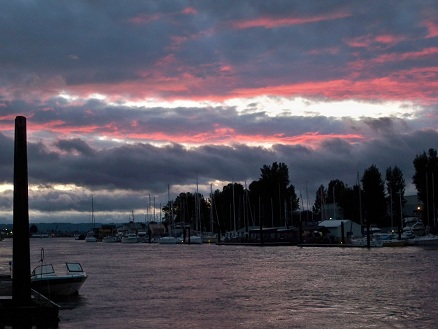
The red skies and steel gray waters of the North Portland Harbor, taken a few days ago from the deck of my house.
. . . . .
. . . . .
. . . . .
A Tale of Two Summers
22 September 2010
Wednesday
It was the best of summers, it was the worst of summers, it was the summer of wisdom, it was the summer of foolishness, it was the summer of belief, it was the summer of incredulity, it was the summer of Light, it was the summer of Darkness, it was the June of hope, it was the September of despair, I had everything before me, I had nothing before me, I was going direct to Heaven, I was going direct the other way — in short, the summer was so far like the present season, that I insist on its being received, for good or for evil, in the superlative degree of comparison only.
After Charles Dickens is finished spinning in his grave, I hope that his shade will forgive me for that. But I do feel that it was a summer of contrasts, even if not superlative in every degree. And now it is over.
According to the U. S. Naval Observatory website, the autumnal equinox for 2010 occurs Wednesday 22 September at 11:09 PM EDT, which means that it will be 8:09 PM PDT for those of us on the west coast of North America, which means that in true time, not the fake and artificial time of DST, the autumnal equinox will occur at 7:09 PM (DST is, in itself, evidence of the tolerance for phoniness in contemporary life). By most accounts, Thursday 23 September will be the first day of fall, making today the last day of summer (or both are today, depending on how you count it).
I will spare the reader the travails of my personal life, being incidental and wholly without interest in relation to anything that I have written here, but some of the events of the summer had a very direct bearing upon the content of this forum. Actually, technically, it was just before the summer started, on the 12th of June, that my computer was stolen as I was walking in Tryon Park in Lake Oswego. This event alone has changed my life, and changed it for the worse. It is, without question, the worst thing that has happened to me in my adult life. My backups to my computer file were in the bag with the computer, so I lost a year’s worth of writing. I haven’t even had the heart to go back to the manuscripts that I was working on at the time to see what I could make of them from older versions, where I had older versions. As though in a puff of smoke, three nearly completed manuscripts that I had planned to publish this year were gone.
What was I to do? Well, what choice did I have but to go on? And, despite the loss, I generated a lot of new ideas this summer. I lost my notebooks of ideas at the same time, to the same theft, as well as all of my pictures of Argentina, but I started new notebooks and I think I had a pretty fertile summer in terms of ideas. Some of these ideas will be showing up in this forum as I refine them to the point at which they can be seen by others. For the time being, they remain my “secret garden” of ideas, as Nietzsche described his efforts in the opening to On the Genealogy of Morals.
Portland had a lot of nice weather this summer, lots of sun but not many days with oppressive heat. Recent transplants to Oregon thought it was a wet and dreary summer, but really it was quite a nice summer as Oregon summers go. I can remember many summers during my childhood when it absolutely poured on the Fourth of July. So, yes, we get rain here in the summer, but we also get a reasonable share of sun. And although I didn’t get to the beach as much as I like to during the summer, because we had a good amount of sun I did get to do a good amount of swimming.
Upon returning from Norway last fall I wrote about the Two Lives that one experiences — the life of travel and leisure, and the life of labor and toil. Often it happens that we live these two lives simultaneously, and so we toil during the day (for those on the conventional schedule of western business enterprises) and take our leisure during the evening. Sometimes the two lives are lived in series, and sometimes they are lived in parallel. Thus my tale of two summers is a tale of two summers lived in parallel: the summer I would like to forget but cannot wish away, and the summer that I hope I will remember but which has already begun to fade. Both were the summer of 2010.
. . . . .
. . . . .
Concentrations of Wealth
20 September 2010
Monday

Bend Barbie: This yuppie Barbie comes with your choice of BMW convertible or Hummer H2. Included are her own Starbucks cup, credit card and country club membership. Also available for this set are Shallow Ken and Private School Skipper. You won’t be able to afford any of them. (From a online humorous piece about stereotypical Oregonians.)
Another Addendum on Non-Transient Spaces
In recent posts The Spaces in Which We Live and Addendum on Non-Transient Spaces I formulated some ideas about the relationship between financial resources and living space. Such ideas are not new. There has, in particular, been a lot of discussion of the spatial concentration of poverty in public housing projects. Recent correspondence with my sister about the above-mentioned posts has brought my attention to concentrations of wealth that deserve mention in their own right.

Bend, in Central Oregon, was formerly a cowboy town, but its character has, shall we say, changed somewhat.
My sister mentioned to me the case of the town of Celebration, Florida, which was developed by the Walt Disney Company. She had looked into the prices of the houses in this community and told me that it is extremely expensive to live there. That is no surprise, but I hadn’t really thought about it. However, once I did start thinking about it I realized that most carefully planned communities are extremely expensive, and therefore one of the factors that influences life in such communities is the filtering effect of only having wealthy people in a neighborhood.
It seems odd to even have to say it, but being wealthy can be very pleasant. However, it needs to be said because of stereotypes perpetuated by television and the popular press which likes to portray the very wealthy as being vicious, unpleasant, and shallow. This is no more true in fact of the wealthy than it is of the poor. In fact, wealthy people are often happy and friendly. And that should not come as a surprise. Having plenty of money removes a lot of worries that ordinary folks have. If you have a lot of money you don’t have to worry about where your next meal is coming from. You don’t have to worry about whether you will make your rent this month, and you don’t have to worry about what happens to you when you get old. As a result of having far fewer worries than the poor, the rich are often pleasantly light-hearted about life. Of course, they are not without their worries. They have to worry about their stock portfolio and whether to go to Bali or Tahiti next vacation, but this doesn’t really compare to the worry of how you will deal with the pain when your tooth cracks and you don’t have the money to fix it.
One of the problems of gentrification, however well intended, is that it often has the result in fact of transforming spatial concentrations of poverty into spatial concentrations of wealth. This is often very good for a city (or, at least, for a particular neighborhood within a city), and it can be pleasant for the wealthy people who move into recently renovated historical sections of a city, but it is very traumatic for the poor who are expelled. The expulsion never needs to be formalized in a legal sense, because of the filtering effect of expensive living. Once a neighborhood is spruced up, everything gets expensive. So even if you hang on to your little piece of property and don’t go along with the program of gentrification (assuming that the city doesn’t force you out through condemnation proceedings — something the City of Portland has shown a willingness to do), the surrounding increase in property values will drive up your property taxes until you can no longer afford to live in the neighborhood. One of the most notorious cases of this was Hilton Head, South Carolina, once a home to many poor African-Americans, subsequently developed in high style, producing the wealth filter effect that eliminated all the poor people from the area.

Portland's so-called “Pearl District” is a particularly nauseating example of gentrification. I wouldn't go here except that my work takes me through the area almost every day. This area formerly consisted of warehouses and industrial buildings.
While the poor are most definitely poor, they aren’t stupid. They know that when developers start buying up properties in poor neighborhoods that the developers are essentially placing bets that this now-poor neighborhood can become the next gentrification success story. The poor know that when this happens they are likely to be forced out of the area out of financial necessity, just as they know that, even if their present neighborhood is far from perfect, it is probably better than wherever they will end up once forced out of their present situation. Ever-present inflation coupled with deteriorating wages for the working poor (when adjusted for inflation) pretty much guarantee this result.

Mitigation for gentrification is possible in places like Venice, but most places aren't like Venice. This is the exception to the rule.
Social and economic forces larger than any one individual — the “invisible hand” as it were — conspire at gentrification, i.e., the concentration of wealth and the spatial segregation of economic classes. Local governments could provide mitigation for these effects, but to do so would be very expensive, and the poor are not a constituency that many politicians today see themselves as serving. There are instances of such mitigation, however. Old houses in Venice have been renovated at the expense of the government with the residents given a guarantee that they can move back in again after the renovation. Venice is an historical treasure, a unique place with a genius loci all its own, and the Italian government knows that it must take extraordinary measures to see that it is preserved. This is one way to do it. But if it takes an architectural treasure like Venice to see that such mitigation takes place, well, most places on the map aren’t Venice and consequently they won’t be treated in this way.
There is another name for the concentration of wealth other than gentrification: capital. We can think of the growing concentrations of wealth in the industrialized world as a kind of residential capital formation. Once we think of it in these terms, we can also see the traditional (read: poor) neighborhoods uprooted and replaced by gentrification as repositories of social capital. Traditional neighborhoods, in so far as they exist at all and are not mere urban legends, are like climax ecosystems: highly articulated and complex social structures that have evolved into what they are, and can preserve their complexity only if they remain intact. If you “clearcut” a traditional neighborhood — i.e., raze it to the ground and build new buildings in the same space — then the endemic species are going disappear and be replaced by pioneer species.
Thus in the paradigmatic case of gentrification, when a traditional urban neighborhood undergoes development that forces out long term residents and is later populated by wealthy parvenus, what we have is the replacement of social capital with financial capital. In so far as the social capital of the traditional neighborhood made it possible for that neighborhood to retain its quaint traditional character, thereby making it valuable for investors, developers, and speculators, there is a sense in which social capital is transformed into financial capital. Once spent, the social capital is dissipated, and financial capital takes its place.
This is, as I said, the paradigmatic case. I don’t think that such a case is often realized in fact, but certainly there are many cases that approximate, to a greater or lesser degree, this paradigm case. In writing this I sound like a Jane Jacobs enthusiast, but that isn’t my point. The label of “gentrification” is often a stick used to beat developers just because developers are unpopular. But developers are merely a symptom of the changes taking place in large industrialized cities. The developers exist because they are serving a need. If cities were not willing to allow neighborhoods to be transformed, and if people were not willing to pay disproportionately high prices for inner-city redevelopment along the lines of gentrification, then developers and speculators simply wouldn’t exist because they wouldn’t be able to make a profit at what they are doing.
What we find in fact is that cities are quite proud of their transformed neighborhoods like Portland’s Pearl District, so much so that they often facilitate the work of developers. And once a “buzz” develops around a gentrifying neighborhood, there is often great snob-appeal in acquiring property — residential or commercial — in the newly “hot” neighborhood. Having a house or business with the “right” address can be, for such people, as important as having the “right” car and the “right” clothes.
. . . . .
. . . . .
. . . . .
Addendum on Non-Transient Spaces
17 September 2010
Friday

Eeny, meeny, miny, moe... it doesn't really matter which one you choose because they're all the same anyway. Pure fungibility embodied.
Further to yesterday’s post on The Spaces in Which We Live — in which I noted that while we intend to live in non-transient spaces (in contradistinction to the proliferating transient spaces that have come to dominate our lives), the time pressure on our busy lives in industrialized civilization means that we often unintentionally spend a greater part of our time in transient spaces — I have a few things that I would like to add in regard to non-transient spaces.
In so far as residential property is the paradigm of non-transient space, space primarily intended for settled living, the contemporary suburb, sometimes called a “bedroom community,” constitutes a locus of non-transient space. Suburbs represent a spatio-temporal compromise: close enough to a city to be convenient, but not so close that one must live in dense urban housing developments such as apartments or condominiums; spacious enough for single-family homes, but not so spacious that one has real elbow room; a reasonable commuting time from a city, but a commuting time compromised by thousands of other commuters that create a rush hour. The compromises to one’s space and time end up boxing in the suburban dweller on his 5,000 square foot lot. The resulting bedroom communities have proved wildly popular, but are also as notoriously alienating and as soul-destroying as any urban environment.
Money buys fewer compromises, or less severe compromises. Today, space is largely a function of wealth. Capitalist economies must put a price on everything that can possibly be exchanged, and so just as interest is the price of time, real estate prices are the price of space. Our existential matrix in space and time can be cashed out in terms of interest and real estate: in other words, the mortgage that most Americans carry, and the mismanagement of which were in the recent past the occasion of a financial panic, determines the cash value of our living situation. More than anything else, the mortgage symbolizes life in capitalist civilization.
Despite the recent turmoil in the real estate market, and declining prices in some areas, real estate prices are quite high in historical context. It is not unusual for a family to spend more of its income on housing (whether rent or mortgage payment) than any other budget item. This especially effects the coasts (in contrast to inland areas) and more especially effects densely populated urban areas. On the west coast of the US, San Francisco is especially known for its high real estate prices, as it is also known for its rent-controlled apartments. Though less well known to those outside the Pacific Northwest, housing prices in Seattle are outrageously high. One of my sisters recently purchased a modest house in West Seattle for more then $400,000.00. This is essentially the “entry level” price for housing in Seattle, and, needless to say, if you’re earning minimum wage it is going to take you some years to save up enough to get into a house that costs a half million dollars.
The largest houses and the largest pieces of properties go to the wealthiest, along with proportionally large property tax bills that support local services and schools. It is easy to see, within even a smallish urban area like Portland, the differences in public facilities made possible by different real estate valuations and therefore real estate tax rolls. If you walk in the public parks of Lake Oswego (a wealthy area to the south of Portland), you can see the level of spending that has gone into these public areas. Go to a less wealthy part of Portland, and it is obvious that much less money is available for public services and public spaces.

Lake Oswego has some of the most expensive housing in the greater Portland Metropolitan area, and property taxes to match, though I now have a dim view of the area as my computer was stolen in Lake Oswego last June.
The large “McMansions” of the well-to-do on their large lots are reserved for the wealthy as though kept behind velvet ropes. And, in fact, they are sometimes shown in exactly this way. Up until the recent housing crisis Portland home builders used to hold a “Street of Dreams” event each summer, in which builders would put up enormous homes along a given street, and the public could pay to walk through and gawk at spaces in which they could never afford to live. It was sort of like the person who buys a copy of the DuPont Registry or the Robb Report just to look at the pictures of automobiles they could never afford to buy. Here conspicuous consumption runneth over and creates an industry based on the consumption of conspicuous consumption.
But there are limits to all of this. The upwardly mobile middle class who still (as ever) aspire to and wish to emulate the condition of the truly wealthy settle for cheaply built large houses that are on small lots, so that the wall of their neighbor’s similarly large house on a small lot is about six feet away. If both houses have windows facing each other, you cannot help but being witness to the intimate family life of your neighbor unless you close the blinds and never open them. I find such neighborhoods to be remarkably ugly, especially the houses built during the past twenty years, and I wouldn’t live in such a neighborhood even if I could afford to do so (which I can’t).
All of this is frighteningly similar to the house that Tolstoy describes in his great story The Death of Ivan Ilych. After a long paragraph describing the wonderful house that Ivan Ilyich found for his family and the effort he put into its decoration and furnishings, Tolstoy continues about the same house in the next paragraph:
“In reality it was just what is usually seen in the houses of people of moderate means who want to appear rich, and therefore succeed only in resembling others like themselves: there are damasks, dark wood, plants, rugs, and dull and polished bronzes — all the things people of a certain class have in order to resemble other people of that class. His house was so like the others that it would never have been noticed, but to him it all seemed to be quite exceptional.”
My mother’s house — the house where she grew up and the house where I grew up — is an exception to the equation of money and space. It is a large traditional farmhouse on ten acres in rural Clatsop County. Most old farmhouses in Oregon have been subjected to brutal remodeling that has deprived them of their character, but my mother’s house looks essentially as it did when it was built about ninety years ago. Precisely the same untouched character of the house that has preserved its authenticity and its genius loci has made it worth very little in absolute financial terms. On the tax rolls, the house is worth little more than its lumber could fetch for scrap, though to my family it is a treasure beyond price.
My mother, who is not wealthy, has more space and far more peace and quiet than those with enormous mansions recently built in close-in suburbs. But living in a house in the country requires patience and skills that no longer even apply to recent houses. You must build fires to stay warm, and in order to build fires you must put in sufficient wood before the winter begins. And this is only the beginning of the demands of living in a country house. If you were born to it, you know what I mean without any explanation; if you weren’t born to it, no amount of explanation would be sufficient. In this respect, country people represent an aristocracy of birth to which no amount of money can buy entrance.
. . . . .
. . . . .
. . . . .
The Spaces in Which We Live
16 September 2010
Thursday

Portland's neo-Romanesque Union Station, with its familiar “Go By Train sign”, is a paradigmatic example of a transient space.
In a couple of posts, Epistemic Space: Mapping Time and Transient Spaces, I tried to describe the peculiar character of spaces that are purpose-built for transience, spaces not intended for lingering or loitering, much less for residing. Cities are especially rich in transient spaces, such as sidewalks, elevators, escalators, pedestrian malls, bridges, hallways, bus and train stations, and so forth. There are also many examples of what we might call quasi-transient spaces, where lingering is expected, but only for a socially acceptable period of time, such as restaurants, laundromats, and museums. If you stay too long in a museum you will be viewed with suspicion. Such quasi-transient spaces are often precisely metered, as in the case of car parks, which at least reduces the ambiguity of what span of time is socially acceptable. Some museums are beginning to go this route by selling tickets with precise entry times.
Now, as it happens, transient spaces are exactly those spaces in which people end up loitering, and in fact it is enough of an issue that laws against loitering are passed so that police can, by legal compulsion, compel people not to linger where they are supposed to only pass through (a concrete and personal example of the state’s monopoly on the legitimate use of force). Such spaces, however, are intrinsically ill-defined and open to exaptation. A sidewalk is a paradigmatically transient space, but a sidewalk cafe is a paradigmatic example of a place to linger. I remember especially when I stayed a couple of weeks in Paris in 1996 how the broad boulevards bequeathed by Baron Georges-Eugène Haussmann’s nineteenth century rational reconstruction of the city also provided very wide sidewalks, and in some places the sidewalk cafes were obviously permanent installations. For example, low wooden platforms were built on sloping sidewalks in order to provide a flat terrace for tables and chairs. Also, outdoor heaters were commonly employed to make it possible to use these sidewalk cafes after dark and during the cooler months.

A satellite photograph of contemporary Brasilia, showing it still very much a realization of its plan.
One of my favorite stories of an exapted transient space (I can no longer recall where I heard this) concerns the bus station in Brasília, the capital of Brazil, mostly designed by urban planner Lúcio Costa and architect Oscar Niemeyer, and which recently celebrated its fiftieth birthday (which I celebrated in Fifty Years of Brasília). As I heard the story, Brasília, being a planned and therefore artificial city, had no planned space for people watching, no organized space for loitering, no place to watch what A. E. Housman saw as, “…the moving pageant file, Warm and breathing through the street,” and so people began hanging out at the bus station. Here was movement and interest, like a waterfall of humanity, always the same yet always new.
Truth be told, most urban planning has been disastrous, subject to fads and to theories with only the most tenuous connection to reality. Time and again the most hopeful and advanced urban planning has resulted in spaces that are not used as they are intended to be used. This sounds innocent enough, except that the biggest failures of urban planners in the recent past were the creation of “projects” which concentrated poverty and became exapted primarily for criminal activity. This is not the kind of natural and healthy exaptation that an urban planner would like to see as his grand design is translated into actual living conditions for actual human beings. These spaces intended for living became spaces used for transient purposes, such as the manufacture and distribution of controlled substances.

The sight of housing projects being demolished has become common (demolition of the Pruitt-Igoe project in St. Louis, Mo.)
Now the cities that built projects in the 1960s and early 1970s are tearing them down, and dealing with a whole new set of problems that have been created by attempting to mix uses and avoid the concentration of poverty and dependency. Also, the demolition of projects has been attended by protests against “gentrification,” which I briefly mentioned in The Rational Reconstruction of Cities but which I have not yet given the attention to which it is entitled based on its intrinsic interest.
Planning is not always a disaster. Very close to my office, where I am now writing this, is Orenco Station, which is a planned “community” that was constructed around a light rail terminal when Portland’s light rail system was extended to the west side of the city. I have talked to many people in the local real estate and construction industry, and everyone wants to claim responsibility for being involved with this development. As we all know, success has a thousand fathers,while failure is an orphan. I was told that when a delegation came from eastern Europe to visit examples of successful development in Oregon that there were two places they wanted to see: Spirit Mountain Casino and Orenco Station. Personally, I find Orenco Station hideous, and I can feel its artificiality as strongly as though I were strolling in Disneyland, but apparently I am in the minority here.
The spaces in which we live are the antithesis of transient spaces. We might simply call them non-transient spaces. But the places in which we are supposed to live are not always the places in which we actually do live, and the places we we do in fact live are not always the places we are supposed to live. Not only is our living space not distributed according to intention or according to a rational plan, it also changes over time. Thus old warehouses become loft apartments, and then we get so accustomed to people living in warehouse lofts that residential structures are purpose-built to look like old warehouses. A friend of mine once called these “lofts for yuppies” in a disdainful tone.
If we consider the contemporary busy professional, devoted more to career than to home and family, one’s soi-dissant “home” is a place one returns to for sleep. But such a professional spends more time out of home than at home. Indeed, I suspect that such a professional — today, both men and women — live the bulk of their time in Transient Spaces, moving from sidewalk to subway car to cafe to performance venue, and so forth.
The spaces in which we live partially constitute the kind of persons that we are; we construct our lives today as we construct our artificial environments. And this is important. What kind of a person lives in Transient Spaces? The answer is so obvious it scarcely need be made explicit: transients live in transient spaces. Of course, the kind of transients I describe above are wearing silk suits and carrying lap tops, rather than wearing rags and pushing shopping carts, but the point here is that this is a different of degree and not a difference in kind.
Industrialized civilization with its need for the mobility of labor and its regimentation of clock and calendar has created the need for transient spaces, the market has responded to the need by building transient spaces, and transient spaces have created transients — transients of all kinds, all conditions, and of all social classes. The children of middle class households who spend their time on city streets are as much transients as the silk suited business man or the beggar with his cardboard sign.
. . . . .
. . . . .



